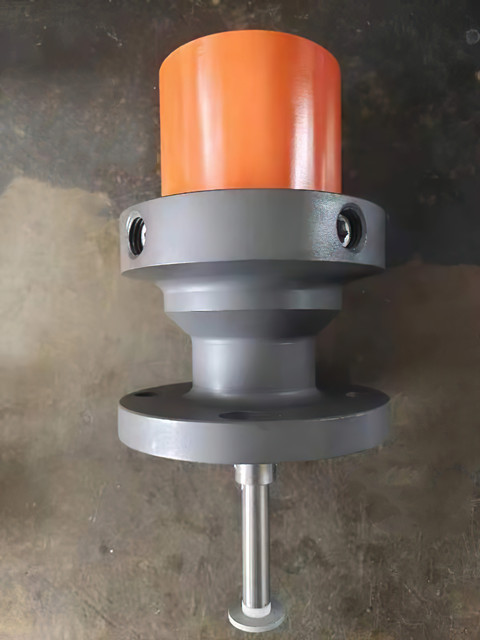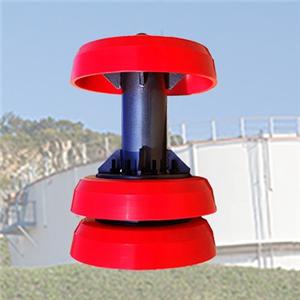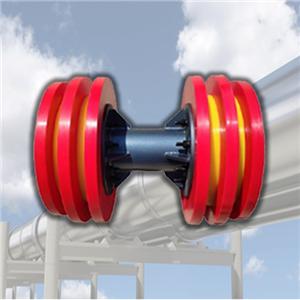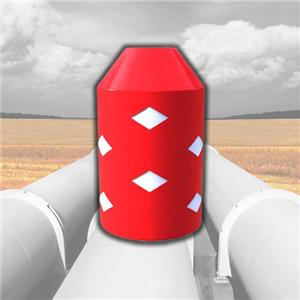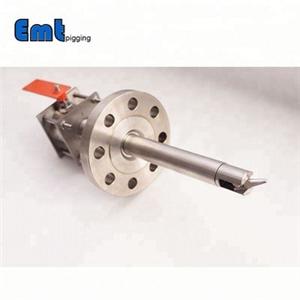New products customized by customers!
Quantity required by customer :3sets
Destination: Indonesia
2. Principles and characteristics of monitoring technology
2.1 Inductance probe method
This method monitors corrosion within a pipeline by continuously monitoring the inductance and inductance signals of a test piece of the same material as the pipe that is exposed to a corrosive environment. When the thickness of the test piece changes. We apply a constant alternating current to the test coil. This creates a magnetic field around the coil. Then the coil inductance is very sensitive to the thickness change of the metal test piece. When the metal test piece has minimal thinning due to corrosion. The inductance of the test coil will also be affected. By measuring the inductance change through the coil, the corrosion thinning amount of the metal test piece of the inductance probe can be calculated. And then the corrosion rate can be calculated.
The advantages of the inductive probe monitoring method are numerous. For example, it has many applications and can be used in any corrosive environment. So it has high monitoring accuracy, high sensitivity and short response time. Its response time in a corrosive environment of 0.0254 mm/a is only 1 h. Such as stable performance, good sealing, high-pressure resistance, strong corrosion resistance. It can be also used continuously for 2 a in a corrosive environment of 5 mpy. Then based on the above advantages, inductive probes are often used to evaluate the actual effect of anti-corrosion measures directly. Inductive probe monitoring can also be used to adjust process parameters in industrial pipeline corrosion control.
2.2 Coupon method
A coupon of known size and mass is placed in a corrosive environment inside the pipe. The material of the coupon is also the same as that of the pipe. After exposure for a certain period of time, the coupons are removed. After degreasing, rust removal, and drying, the mass is weighed. The corrosion degree and type of the pipeline were judged according to the quality and morphology changes before and after the test piece. In the corrosion monitoring of the subsea pipeline, the coupons are usually set with 3 layers. Then they are placed in the water layer, oil layer, and gas layer respectively. This also reflects the corrosiveness of water, oil, and gas, respectively. When there is sediment corrosion in the pipeline, horizontally installed disc coupons can be used. Then simulate the sedimentary corrosion of the pipe wall at 6 o’clock in the sea pipe.
When the pipeline flow rate is high and erosion may exist, vertical strips are usually selected. Simulate erosion-corrosion at high wall shear stress locations. In addition to visual observation and quality analysis, the tested coupons often need to be supplemented by pitting depth analysis, corrosion product analysis, and scaling product analysis. The data obtained by the coupon method can comprehensively reflect the influence of corrosion factors. And its reaction information is rich, it is the most intuitive and reliable monitoring method. However, the test cycle required by the coupon method is longer (generally, the coupon can be replaced once every 3 months). And the reflected corrosion information is the comprehensive result of the test period. This does not reflect transient corrosion information.
2.3 Resistance probe method
The resistance probe technology is to expose the metal wire of the same material and a specific length as the resistance probe to the corrosive environment in the pipeline. When the wire corrodes, the current in the constant voltage loop drops. It is assumed that uniform corrosion occurs on the wire surface. Then, by calculating the resistance change, the reduction in the cross-sectional area of the wire can be calculated. This results in a uniform corrosion rate. Changes in temperature can also cause changes in wire resistance. In a corrosive environment with large temperature changes, the resistance error caused by temperature changes has a large influence and cannot be ignored. In this corrosive environment, resistance probes are also often used in conjunction with temperature sensors. This compensates for temperature errors.
Because the resistance probe technology does not have strict requirements for the application environment. So it is suitable for corrosion monitoring in almost all corrosive environments. And then the device components are simple to manufacture and have low cost. This is a long-established and widely used corrosion monitoring technique.
But resistance probe technology also has limitations.
①Firstly, insensitive to corrosion rate monitoring. Because the temperature in the corrosive environment always changes in a small range. This causes the loop resistance to also fluctuate (commonly referred to as the temperature effect). Usually, this requires the amount of wire corrosion to build up to a certain extent. The resulting increase in loop resistance is considered corrosion by the data processing system.
②Secondly, regardless of local corrosion or uniform corrosion, the circuit resistance will increase. Therefore, we cannot judge whether local corrosion occurs by the change of resistance;
③ At last, unable to quantitatively monitor local corrosion.

